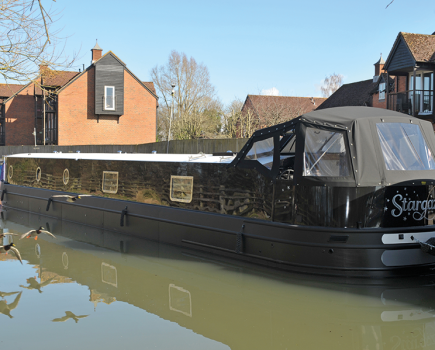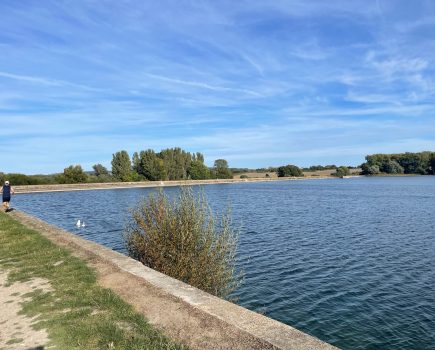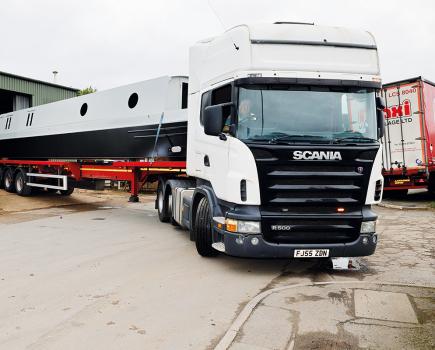Discovering you have a hole in the hull is bad enough, but when you find the true extent of the problem is worse than expected it can turn out to be expensive

John Ryan recalls when corrosion damaged his boat in the hope of offering a warning to others…
I purchased Pip, a 35-footer with a cruiser stern in July 2000, and we had known for about four years that there had been corrosion to both sides of the bow and some pitting to both sides.
I’d booked Pip in for blacking in May and, when it was out of the water, we quickly discovered that a puncture in the bow was causing water to leak from inside the water tank into the canal. It was a bit of a problem and the best solution seemed to be to carry out a full hull inspection to determine what repairs were needed.
The hull survey took around three hours to complete and recommended a number of essential repairs. The marine surveyor said that, for a boat of its age, the side plating was showing excessive pitting, and there were signs of heavy pitting and corrosion scouring along and below the waterline. In places, pits of some 2mm were discovered and he felt that areas of deeper pitting would exist beneath the blacking, but to examine it in detail, the hull would need to be shot-blasted back to bare metal.

The good news was that the nominal metal thickness on the hull sides is around 5.2mm to 5.9mm and, in spite of the deep pitting, the main hull retained structural integrity.
The exception was the areas on each side of the bow section. An ultrasonic point thickness reading from these areas indicated very thin metal of 2.9mm, heavy scouring and deep pitting. As we already knew, one area had, in fact, perforated (approx 2mm) through into the fresh water tank.
The recommendation was that the bow should be over-plated in at least 5mm steel for a distance of 88 inches back from the stem and to a height of 21 inches or just below the rubbing strake. Over-plating should not be welded to the actual rubbing strake, apparently.

Then a new wear edge would need to be attached to the baseplate at the turn of the bow on each side, allowing for a protrusion of some 25mm. Because of the amount of pitting on the hull, the marine surveyor recommended four new 2.5kg anodes should be fitted. He also suggested the rudder blade through-bolts should be inspected and replaced, and wear pads fitted at points where the rudder blade had abraded the uxter at the stern.
Interestingly, he commented that the degree of corrosion was more akin with a boat of 30 years old and advised that Pip should be examined by a marine electrician to investigate the possibility that stray electrical currents might be the cause of the excessive pitting.
The boat has been moored on the Bridgewater Canal for 15 years and been blacked as often as possible, but there was a period for about four years when it wasn’t. And, although the boat doesn’t have a shoreline, I did use a generator for many years until I installed solar panels in 2011.
Thankfully, Nigel Hamilton of Thorn Marine, Warrington, provided valuable help and advice, including stripping out the saloon interior, which needed to be done to allow the work to take place.
From start to finish it took approximately a month to complete the welding and blacking and then it was a case of reassembling the saloon.
The repairs cost £295 for the hull survey, the welding and anodes – by Darren Minjoot and his team at Hesford Marine, Lymm – was £1,650 and the blacking was a further £350. It was almost £2,300 for the total job.
Although we are not exactly sure what caused such extensive corrosion, the true extent of what damage it can cause and what can happen when it is not kept in check on a regular basis, every two or three years for example, should perhaps serve as a warning to other boat owners.
Image(s) provided by:
Archant







